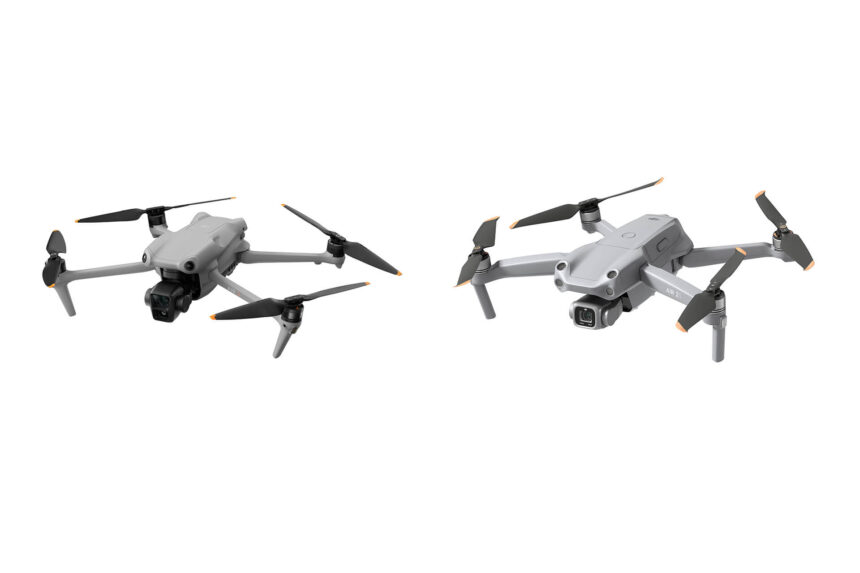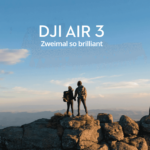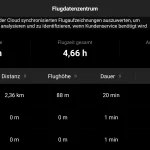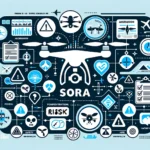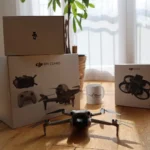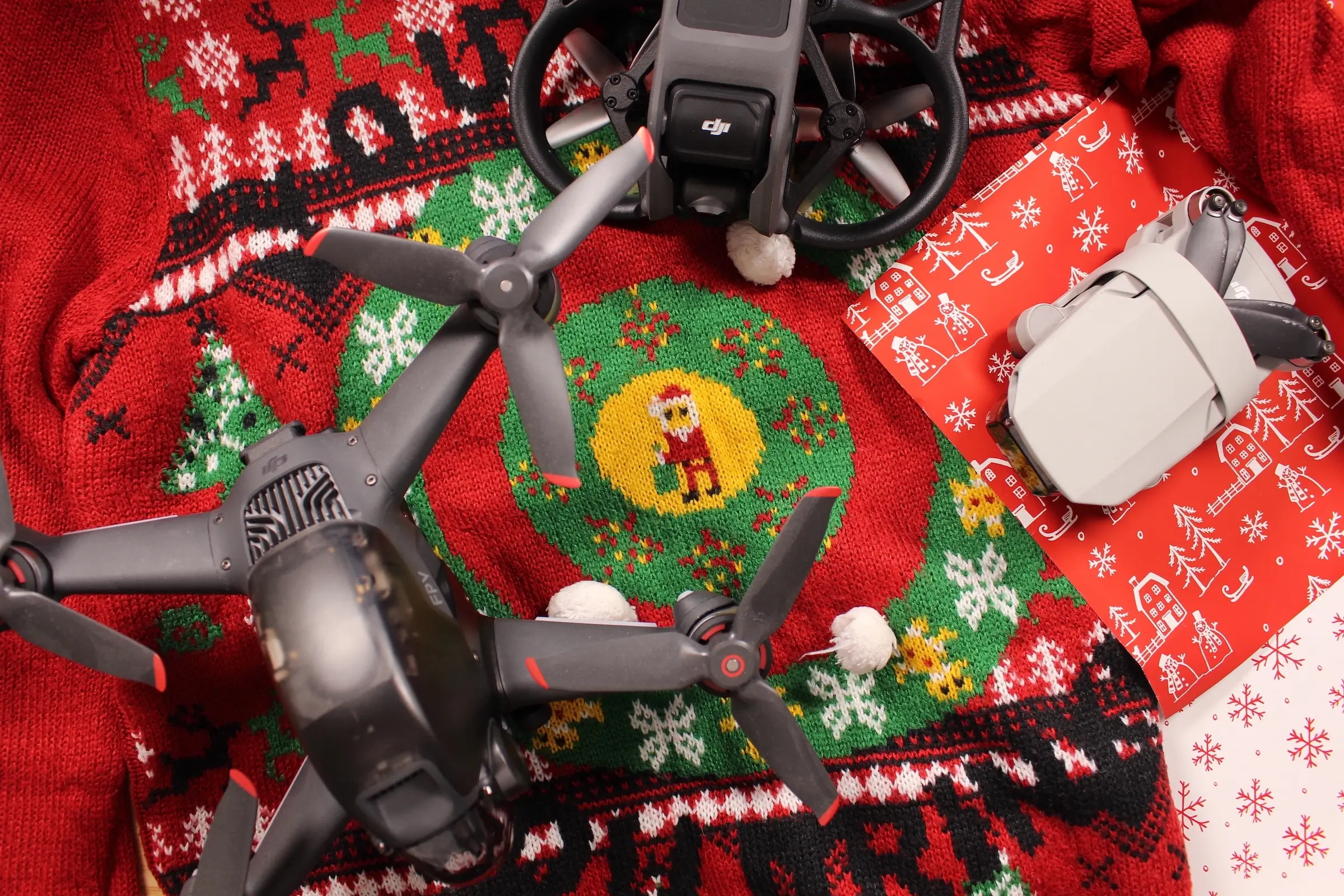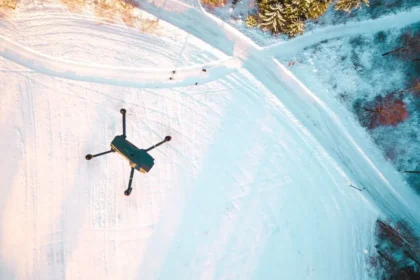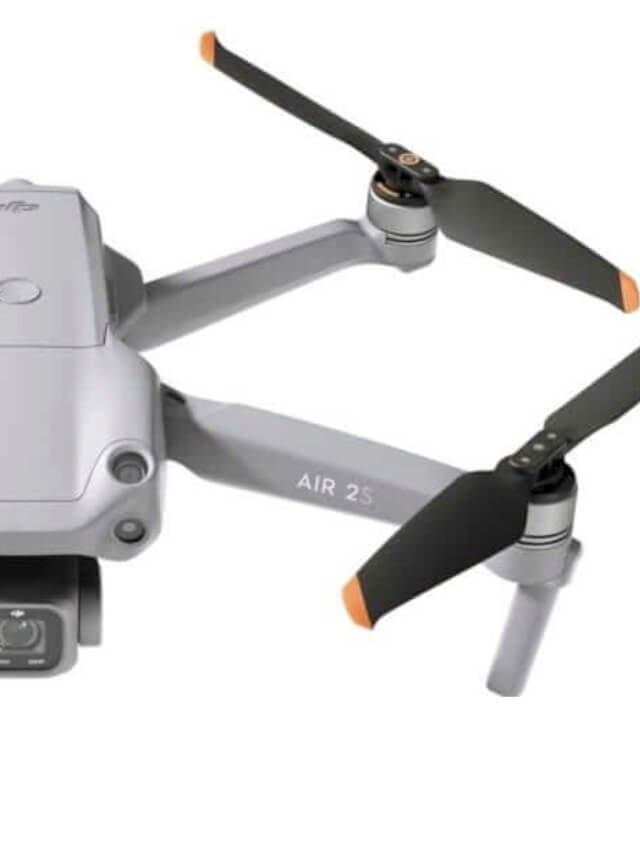We compare the DJI Air 2S with the DJI Air 3 and show you where the differences and similarities are and which drone is better. To do this, we take all the important technical data of both drones into account.
With the release of the DJI Air 3, there is another drone model that potential buyers have to deal with. We compare the design, features (especially the camera), functionality and, of course, the price of the Air 3 and its predecessor, the Air 2S. With the help of our comparison, it should be easier for you to make a purchase decision.
DJI Air 3 and Air 2S in comparison
First of all, we provide an overview of the most important technical data of both drones in comparison. This data already gives you a very good overview of both models in the comparison. This is followed by a detailed description of the differences and similarities.
Vergleich der wichtigsten technischen Daten
| Drohne | DJI Air 3 | DJI Air 2S |
|---|---|---|
| Preis | Keine Produkte gefunden. Keine Produkte gefunden. | 639,48 EUR zum Angebot |
| Größe (ausgefaltet) | 258,8 × 326 × 105,8 mm | 183 × 253 × 77 mm |
| Gewicht | 720g | 595g |
| max. Flugzeit | 46 Minuten | 31 Minuten |
| Kamera | Dual-Kamera, um 90° schwenkbar | Single Kamera System, nicht schwenkbar |
| Sensor | Weitwinkelkamera: 1/1,3-Zoll-CMOS, Effektive Pixel: 48 MP Mittlere Telekamera: 1/1,3-Zoll-CMOS, Effektive Pixel: 48 MP | 1″ CMOS Effektive Pixel: 20 MP |
| Objektiv | Weitwinkelkamera Sichtfeld: 82° Äquivalente Brennweite: 24 mm Blende: f/1,7 Fokus: 1 m bis ∞ Mittlere Telekamera Sichtfeld: 35° Äquivalente Brennweite: 70 mm Blende: f/2,8 Fokus: 3 m bis ∞ | FOV: 88° Äquivalent zum 35-mm-Format: 22 mm Blende: f/2,8 Fokusbereich: 0,6 m bis ∞ |
| Foto-Auflösung | Weitwinkelkamera: 8064 × 6048 Mittlere Telekamera: 8064 × 6048 | 20 MP: 5472×3648, 3:2; 5472×3078, 16:9 |
| Video-Auflösung | Weitwinkelkamera: H.264/H.265 4K: 3840 × 2160 mit 24/25/30/48/50/60/100* fps FHD: 1920 × 1080 mit 24/25/30/48/50/60/100*/200* fps Vertikale Aufnahme in 2,7K: 1512 × 2688 mit 24/25/30/48/50/60 fps Vertikale Aufnahme in FHD: 1080 × 1920 mit 24/25/30/48/50/60 fps Mittlere Telekamera: H.264/H.265 4K: 3840 × 2160 mit 24/25/30/48/50/60/100* fps FHD: 1920 × 1080 mit 24/25/30/48/50/60/100*/200* fps Vertikale Aufnahme in 2,7K: 1512 × 2688 mit 24/25/30/48/50/60 fps Vertikale Aufnahme in FHD: 1080 × 1920 mit 24/25/30/48/50/60 fps | 5.4K: 5472 x 3078 bei 24/25/30fps 4K: 3840 x 2160 bei 24/25/30/48/50/60fps 2.7K: 2688×1512 bei 24/25/30/48/50/60fps FHD: 1920 x 1080 bei 24/25/30/48/50/60/120p |
| Bild-Format | JPEG/DNG (RAW) | JPEG/DNG (RAW) |
| max. Video Bitrate | 150 MBit/s | 150 MBit/s |
| Fotomodi | Weitwinkelkamera Einzelaufnahme: 12 MP und 48 MP Serienaufnahme: 12 MP, 3/5/7 Einzelbilder; 48 MP, 3 Einzelbilder Automatische Belichtungsreihe (AEB): 12 MP, 3/5 Einzelbilder; 48 MP, 3 Einzelbilder bei 0,7 EV-Abständen Intervall: 12 MP, 2/3/5/7/10/15/20/30/60 Sek.; 48 MP, 5/7/10/15/20/30/60 Sek. Mittlere Telekamera Einzelaufnahme: 12 MP und 48 MP Serienaufnahme: 12 MP, 3/5/7 Einzelbilder; 48 MP, 3 Einzelbilder Automatische Belichtungsreihe (AEB): 12 MP, 3/5 Einzelbilder; 48 MP, 3 Einzelbilder bei 0,7 EV-Abständen Intervall: 12 MP, 2/3/5/7/10/15/20/30/60 Sek.; 48 MP, 5/7/10/15/20/30/60 Sek. | Einzelaufnahme: 20 MP Serienbildaufnahme: 20 MP (kontinuierliche Serienaufnahme) Automatische Belichtungsreihe (AEB): 20 MP, 3/5 Belichtungsreihe bei 0.7 EV Zeitgesteuert: 20 MP, 2/3/5/7/10/15/20/30/60s SmartPhoto (inkl. HDR und HyperLight): 20 MP HDR-Panorama: Vertikal (3×1): 3328×8000 (Breite×Höhe) Horizontal (3×3): 8000×6144 (Breite×Höhe) 180° (3×7): 8192×3500 (Breite×Höhe) Sphäre (3×8+1): 8192×4096 (Breite×Höhe) |
| max. Geschwindigkeit | 21 m/s (75 km/h) 19 m/s in Europa (68 km/h) | 19 m/s (68 km/h) |
| max. Flughöhe | 6.000 Meter | 5.000 Meter |
| max. Reichweite | FCC: 20 km CE: 10 km SRRC: 10 km MIC: 10 km | 20 km (FCC) 8 km(CE) |
| Betriebstemperatur | -10° – +40°C | 0° – +40°C |
| Fernsteuerung | DJI RC-N2 DJI RC 2 | DJI RC-N1 |
| App | DJI Fly App | DJI Fly App |
| Wegpunkte | Ja | Nein |
| Hindernis-Erkennung | omnidirektional (vorne, hinten, oben, unten, links, rechts) | vorne, hinten, oben, unten |
| Zum Handbuch | DJI Air 3 Handbuch | DJI Air 2S Handbuch |
All technical specifications for both drones are available on the official DJI website.
Differences and similarities
In a direct comparison of both models, it becomes clear that the Air 3 is technically superior to the Air 2S. Even though the newer model takes a step back in resolution and “only” allows 4k recordings, while the Air 2S offers 5.4K. The overall package of the Air 3 simply delivers more here.
Design
Visually, there are differences between the two models. On the one hand, this is of course due to the Air 3’s eye-catching dual camera, which offers a wide-angle and a telephoto lens, but also due to the arrangement of the sensors. Unlike the Air 2S, the Air 3 offers an omnidirectional obstacle detection system. This means that the drone can detect obstacles from all directions (front, back, top, bottom, side).
Camera
The camera system used is more flexible thanks to the two lenses, helped by the ability to rotate it 90°. These portrait shots are particularly suitable for distribution on social media without having to crop the existing shot.
Weight
For this, the Air 3 turns out to be slightly larger and also heavier. With a weight of 720g compared to 595g also quite noticeable. Nevertheless, the weight only plays a subordinate role in this case. This is because the Air 3 comes with a C1 label, which means that the drone can be flown in the Open category without any problems in the future (european drone regulation).
Flying time
The 3 version also improves on the flight time. According to DJI, the Air 3 can stay in the air for up to 46 minutes, while the 2S only manages 31 minutes. Even though these are values under laboratory conditions, the increase is nevertheless respectable.
Flight altitude and range
There are also improvements in flight altitude and range, but due to drone laws, these are more theoretical in nature and should only be relevant for very few drone pilots.
Special features
Especially worth mentioning: The DJI Air 3 supports a waypoints function for the first time in the series. This allows flight routes to be planned in advance, which can then be flown automatically by the drone. A powerful and much desired feature that was previously only reserved for the larger models such as the Mavic 3!
DJI’s in-house OcuSync transmission protocol has also been upgraded. The Air 3 is DJI’s first drone to use OcuSync 4.0 (O4). This means: more range, better latency, sharper image. The prerequisite for this, however, is one of the two new remote controls released at the same time as the drone. These are the DJI RC-N2 as a further development of the well-known RC-N1, and the DJI RC 2 as the successor model to the DJI RC.
Price
The RRP of both drones is not far apart. While the regular price for the Air 2S is 999€, the Air 3 starts at 1099€. For the upgrades on offer, this is a good price and there is definitely nothing to complain about. However, you should also bear in mind that the Air 2S is currently on sale and will be more frequently in the future, where the price will often be around €799.
Keine Produkte gefunden.
- 【1-Zoll CMOS-Sensor】Ausgestattet mit einem 1-Zoll-Kamerasensor und großen 2,4-μm-Pixel unterstützt die DJI Air 2S Videos mit 5,4K/30fps und 4K/60fps
Summary
DJI has once again delivered an excellent upgrade to an existing drone with the Air 3. Apart from the lower video resolution, there are improvements in almost all areas of the new drone compared to its predecessor, the DJI Air 2S.
Particularly noteworthy are the dual and swivelling camera system, the C1 label, the waypoint function, the omnidirectional obstacle detection system and the two new remote controls with O4 support.
With all the new features, it should also be said that the Air 2S is still a super drone that will certainly remain interesting for a large number of drone pilots thanks to the current and future discounts.
*The links contained in this article are so-called affiliate links. With these links DeinDrohnenpilot.de gets a commission for mediated purchases. The price does not increase for the customer.
Letzte Aktualisierung am 2025-04-19 / Affiliate Links / Bilder von der Amazon Product Advertising API


